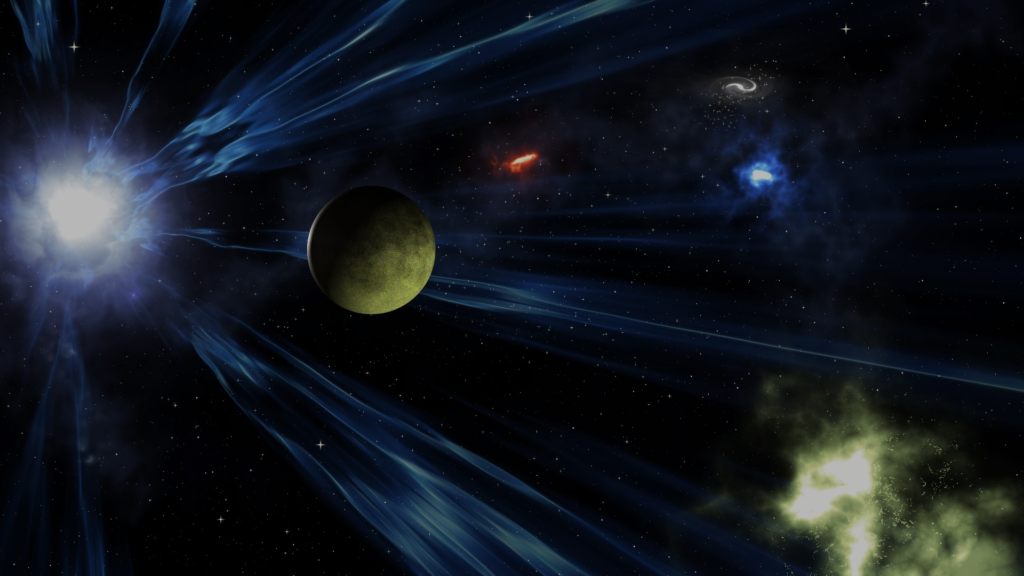## Journey Through the Milky Way Galaxy: Its Structure and Wonders
Have you ever looked up at the night sky and felt a sense of awe, wondering about the vastness of space? That breathtaking expanse is largely dominated by our home galaxy – the Milky Way. It’s a swirling island universe of stars, gas, dust, and mysteries waiting to be uncovered. This post will take you on a fascinating journey through the Milky Way, exploring its structure, its incredible contents, and the ongoing scientific quest to understand it better.
### 1. The Milky Way’s Spiral Structure: A Cosmic Pinwheel
Imagine a giant, cosmic pinwheel spinning slowly in the darkness. That’s a simplified picture of the Milky Way. We live within this spiral galaxy, making it difficult to observe its overall structure directly. However, through careful observations and sophisticated modeling, astronomers have pieced together a fairly comprehensive picture.
Our galaxy is a barred spiral, meaning it has a central bar-shaped region of stars, from which spiral arms extend outwards. These arms are not rigid structures but rather density waves – regions where stars, gas, and dust are more concentrated. Think of them as traffic jams on a cosmic highway. As these waves move, they trigger star formation, creating vibrant, luminous regions within the arms.
Interestingly, our Sun resides within one of these spiral arms, known as the Orion Arm (or Orion Spur), situated about halfway between the galactic center and the outer edge. This seemingly unremarkable location offers us a unique perspective, allowing us to observe both the inner and outer regions of the galaxy.
### 2. Galactic Inhabitants: Stars, Gas, Dust, and More
The Milky Way is teeming with celestial objects. Of course, stars are the most prominent. Billions upon billions of them, ranging from small, dim red dwarfs to massive, brilliant blue giants, populate our galaxy. The distribution of these stars isn’t uniform; they’re concentrated in the spiral arms and the central bulge.
Interspersed between the stars are vast clouds of gas and dust. These clouds are the raw materials for star formation. When gravity causes these clouds to collapse, new stars are born, sometimes in spectacular bursts of activity within nebulae (giant clouds of gas and dust). The iconic Orion Nebula is a prime example, a stellar nursery readily visible with binoculars or a small telescope.
But the Milky Way also contains less glamorous, yet equally crucial, components. Dark matter, a mysterious substance that we can’t see directly but can detect through its gravitational effects, makes up a significant portion of our galaxy’s mass. Its role in shaping the Milky Way’s structure and evolution is a topic of intense research.
### 3. The Galactic Center: A Supermassive Black Hole
At the heart of the Milky Way lies a region of intense activity: the galactic center. Here, observations have revealed a supermassive black hole, Sagittarius A*, with a mass millions of times that of our Sun. This black hole’s immense gravity governs the motions of stars and gas in the central region. Astronomers use observations of the orbiting stars to indirectly confirm its presence and estimate its mass. Imagine a cosmic drain, pulling in everything that gets too close!
### 4. Exploring the Milky Way: Past, Present, and Future
Understanding the Milky Way’s formation and evolution is a key goal of modern astronomy. Studies of stellar populations, gas distribution, and the dynamics of the galaxy provide clues to its history. Observations from telescopes like the Hubble and James Webb provide incredibly detailed images and data that help unravel these cosmic mysteries.
Our understanding of the Milky Way is constantly evolving. New discoveries are made regularly, revealing ever more about the structure, composition, and dynamics of our galactic home. Future missions and advanced telescopes will undoubtedly shed more light on this fascinating subject.
### Conclusion: A Cosmic Adventure Awaits
The Milky Way Galaxy is more than just a collection of stars; it’s a dynamic, evolving system of immense scale and complexity. From its spiral arms to its supermassive black hole, the Milky Way offers endless opportunities for exploration and discovery. So grab your telescope (or just your eyes on a clear night), look up, and marvel at the cosmic wonder that is our home galaxy. What are your thoughts on the Milky Way? Share your comments below! And don’t forget to explore further – there are countless resources available online and in libraries to deepen your understanding of this incredible universe.


